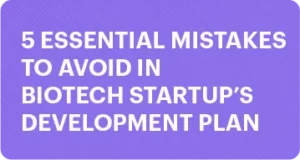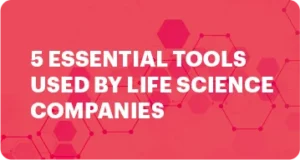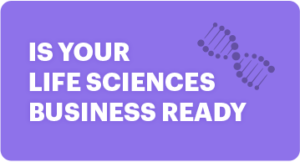Unlock Science: How to Leverage NLP in the Life Sciences
Leveraging Natural Language Processing in the Life Sciences Industry
Natural language processing (NLP) has revolutionized many industries, making complex processes easier and more efficient. As the life sciences industry continues to grow and evolve, NLP offers an opportunity to leverage this technology to improve outcomes. By utilizing NLP solutions, businesses in the life sciences sector can streamline operations, increase productivity, save costs, and improve safety. This guide will discuss existing NLP solutions, potential benefits, challenges, opportunities, and provide examples of real-world applications.
Available Natural Language Processing Solutions
For organizations wanting to capitalize on the potential of natural language processing (NLP) in the life sciences industry, there are a number of solutions available. The most popular of these solutions are aimed at empowering businesses to make sense of large volumes of unstructured data. Some of these include products such as IBM Watson’s Natural Language Understanding, Amazon Comprehend, and Google’s Cloud Natural Language.
These NLP solutions can help businesses to quickly analyze large amounts of text, from conversations to contracts. They use powerful algorithms which analyze text for sentiment, emotions, and even contextual meaning. In addition, they have the ability to identify objects and entities within the text as well as recognize any discrepancies.
By leveraging these NLP solutions, businesses in the life sciences industry can gain valuable insights from their data that would otherwise go unnoticed.
Benefits of Leveraging Natural Language Processing
Natural language processing (NLP) has the potential to revolutionize the life sciences industry. It can offer a range of advantages, such as increased productivity and cost savings, for businesses looking to take advantage of its capabilities. For example, when used for collecting data, NLP can automate routine tasks that would otherwise require manual labor, and it can provide more accurate results with greater speed and accuracy than human workers. In addition, NLP-based systems can also increase the efficiency of processes and reduce the cost of operations.
An additional benefit of using NLP in the life sciences field is the ability to provide more detailed insights into data sets. By using NLP algorithms, the full potential of data can be realized, allowing life science organizations to uncover previously unseen trends and correlations. This can provide an organization with powerful new insights into their research or products, helping them make better informed decisions.
Finally, NLP also presents opportunities for creating better and faster clinical trials. With better systems for collecting data and analyzing results, organizations can streamline the process of running a clinical trial. This also allows them to save time and money, better serve their patients, and meet regulatory requirements more efficiently.
Challenges of Leveraging NLP in the Life Sciences
In leveraging natural language processing (NLP) technology for the life sciences industry, there are some challenges that organizations should be aware of. Primarily, this includes data security. NLP solutions require large datasets to work effectively and securely, which can pose a risk to patient data, as well as research and financial data.
Organizations must implement robust security measures to ensure the data remains safe while in transit and at rest. Furthermore, there are the challenges associated with scalability, maintenance, and integration, as NLP solutions require resources and infrastructure to be constantly monitored and optimized to ensure peak performance.
In recent years, Natural Language Processing (NLP) has been gaining interest in the life sciences industry as a means of streamlining operations and making the most of data. NLP solutions can unlock insights into the healthcare market that were not available before, helping businesses make better decisions and create more effective products.
The potential of NLP in this sector is huge, with a number of potential opportunities for organizations to explore. Automated risk assessment is one such opportunity, thanks to its ability to quickly analyze large amounts of data. This can be used to identify potential risks and then allocating resources accordingly. Similarly, NLP can be used to design clinical trials, utilizing the technology’s data processing powers to deliver accurate results quicker and more efficiently.
Other potential applications include improving patient care through the analysis of medical records, helping drug companies develop personalized treatments, and providing medical advice through natural language-powered chatbots. All of this suggests that the life sciences industry is ripe for NLP solutions, with a wide range of potential benefits for businesses that choose to adopt them.
However, there are challenges associated with using NLP in this field. Data security is paramount and must always be taken into account when deploying an NLP solution. Additionally, the accuracy of the models used and the robustness of the algorithms need to be closely monitored to ensure optimal performance.
These considerations aside, the potential of NLP in the life sciences industry is undeniable. By leveraging the latest developments in this technology, organizations can create powerful solutions to help them achieve their goals. As the technology continues to evolve, this potential will only increase.
Case Studies
The potential applications of NLP in the life sciences industry are vast. To truly understand its power, however, it’s important to look at how it is being used in real-life scenarios. Case studies can provide valuable insight into the successful implementation of NLP solutions in various companies and organizations around the world.
For example, a Dutch biomedical research center known as NBIC recently reported success with using NLP to parse large amounts of text for medical research. Their system was able to extract relevant data from articles related to biomedical research and automatically classify them according to specific topics
Similarly, a company in the United States has reported success in using NLP to identify and assess potential drug targets by analyzing millions of clinical trial documents. This speeds up the pace of medical research and development, allowing new innovations to reach patients sooner.
These are just a few examples of how NLP is being used in the life sciences industry. As more companies invest in this cutting-edge technology, it is likely that we will see many more case studies demonstrating the incredible power of NLP in this field.
NLP is quickly gaining traction in the life sciences industry due to its potential to offer more efficient and cost-effective solutions. By leveraging NLP, organizations can gain insights from vast volumes of unstructured data, automate risk assessment and clinical trial design, and improve overall productivity. However, there are still challenges associated with implementing NLP applications, such as data security concerns. Nevertheless, there are many opportunities for organizations to benefit from leveraging this technology, which makes it an important consideration for businesses in this field. This guide has provided an overview of the benefits, solutions, challenges, and opportunities of leveraging NLP in the life sciences industry.
Sources & Citations
When writing about the life sciences industry, it’s important to include accurate and up-to-date information. That’s why any relevant links and citations used in this guide should be noted and provided for reference. Doing this ensures readers can follow up and explore the topic in more depth if they choose.
Where available, URLs should be included with citations so readers can click through and easily find any referenced materials. This information can help them further understand the subject and appreciate the value of natural language processing in the life sciences industry.
Including optimized keywords and metadata in your guide is essential for helping readers find it online. This means providing a list of relevant terms that relate to your topic, as well as any additional information that can improve discoverability. This could include the title of the article, its publication date, and any related tags. All of this information can be included in the HTML header of your page, making it easier for search engines to crawl and index the content. Properly optimizing your article can help increase its visibility and reach a larger audience.
Good writing is essential for any guide. To ensure the article is clear and accurate, a second pass is necessary. This involves carefully looking over everything from sentence structure to grammar and spelling. It’s also important to double check any facts and figures included in the guide. A human eye can really make a difference in any piece of writing, so don’t be afraid to make the necessary adjustments to ensure the article reads well. With a few minor changes, any mistakes can be quickly corrected and the article can shine.
Sharing the article is a great way to increase its reach and ensure audiences can find it. By using social media channels, email campaigns and other digital outlets, organizations in the life sciences industry can boost awareness of the guide and help others learn about NLP solutions and their potential benefits. Additionally, including optimized keywords and metadata will assist in ensuring the article will be discoverable online. These simple steps can have a big impact on the guide’s success.
Once a guide has been completed, it is important to measure its success and make any necessary adjustments for future guides. Analytics can be used to track the performance of the guide and identify areas where it might need to be improved. This includes information such as how many page views it receives, the average time spent on the page, and the number of people who engage with it. Analyzing this data can provide valuable insights into what kind of content readers are interested in and help to shape the topics that are covered in future publications.
FAQs About Leveraging Natural Language Processing in the Life Sciences Industry
1. What is natural language processing (NLP)
Natural language processing (NLP) is a subfield of artificial intelligence that deals with the understanding of human language and text, such as machine translations, sentiment analysis, speech recognition, and grammar checking.
2. What are some existing NLP solutions available for businesses in the life sciences industry?
Some of the NLP solutions available to businesses in the life sciences industry include automated risk assessment, natural language reports, clinical trial design, sentiment analysis, and text analytics.
3. What are the potential advantages of using NLP in the life sciences industry?
The primary benefits of using NLP in the life sciences industry include increased accuracy and accuracy of reports, improved process efficiency, reduced costs, and better quality of care.
4. What challenges are associated with applying NLP to this field?
Challenges associated with applying NLP to the life sciences industry include data security, privacy, and compliance concerns due to the sensitive nature of the data. Additionally, there can be scalability and cost considerations when leveraging NLP solutions on a large scale.
5. What additional opportunities exist for leveraging NLP in the life sciences industry?
Additional potential opportunities for utilizing NLP solutions in the life sciences industry can include automated risk assessment, clinical trial design, sentiment analysis, and more. Additionally, solutions like text analytics can help organizations gain valuable insights from large volumes of unstructured data.
6. Are there any examples of real-world applications of NLP in the life sciences industry?
Yes, there are various examples of successful implementation of NLP in the life sciences sector. For instance, text analytics has been used in the healthcare space to improve care quality, decrease errors in diagnostic decisions, and help clinicians gain insight into patient needs and proactively prevent complications or disease progression.
7. How do I measure the success of a guide about leveraging NLP in the life sciences industry?
You can measure the success of a guide on NLP in the life sciences industry by looking at analytics such as website visitors, downloads, social media interactions, and feedback from readers. This will give you an indication of how well your guide is performing and what changes you might need to make in order to optimize future guides.





